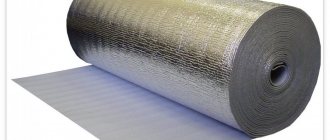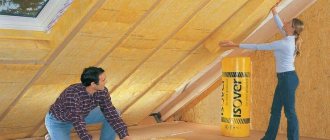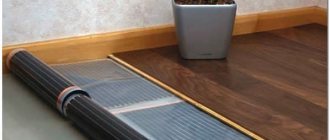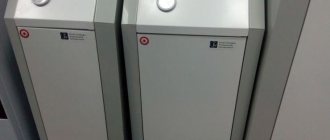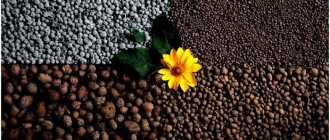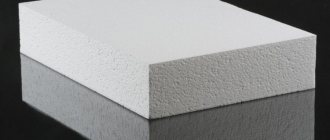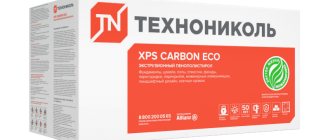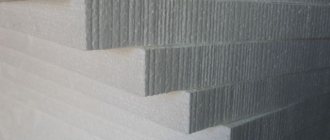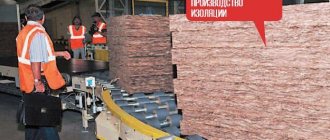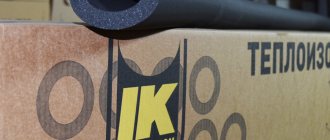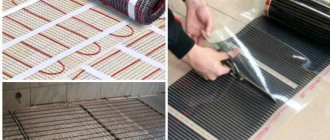Stone wool today is rightfully considered one of the best heat and sound insulating materials. Especially in terms of sound insulation, because such a large number of voids between the fibers perfectly damps sound waves. And that's not all!
Thanks to its elasticity, modern basalt insulation fits quite tightly to the frame and neutralizes any cold bridges. Even over time, it does not lose its shape and properties, and all thanks to its unique structure.
Who would have thought that one day soft insulation for the home would be made from real stone? But this is really so! We invite you to find out how this is done, who is engaged in production today and where such materials are used.
How is stone made soft and fluffy?
Let's reveal a secret: to turn a real stone into soft cotton wool, it is melted in an oven at a temperature of 1300-1500 degrees Celsius. Only at this temperature does basalt become liquid. It drips into a rapidly rotating large flywheel, or immediately seeps through micro-holes into the centrifuge - depending on what technology is used in production.
There, organic matter is added to the fibers formed from the droplets. Fibers under different pressures are formed into mats and slabs. This is how stone wool reaches its final microstructure and density:
In real life this process looks like this:
Interesting, isn't it?
Other brands of basalt insulation for walls
In addition to Rockwool, you should consider other brands that have a strong position in the market. Knauf mineral wool boards are of German quality. Among its products we can note the Insulation series. Phenol-formaldehyde is not used in the production of this cotton wool.
Izovol products are in demand, but are inferior to some brands in quality: during installation and operation they can crumble. But the slabs have a fairly affordable price and good technical characteristics. Most often, Izovol basalt insulation is used for thermal insulation of roofs and attic structures.
Basalt insulation for house walls from the Parok brand is on par with Rockwool in popularity and main characteristics. The brand's products should be purchased if you want to not only protect your home from the cold, but also save on electricity. Also, Parok basalt wool will protect against dust, noise, and is safe for health. But its cost is quite high.
An interesting product is cotton wool from the Ursa brand of the Pure one series. This is something between fiberglass and basalt wool. It is based on only natural ingredients that are combined with acrylic binders.
If for the installation of ordinary glass wool you need to use a protective suit, and inhaling its dust causes harm to health, then no protection is required to install slabs of this series. Its safety and environmental friendliness make it possible to use cotton wool even for internal thermal insulation.
This basalt insulation for house walls is a good thermal insulation option for ventilated facades, walls outside or inside, and roofs. Considering all its characteristics, it is quite economical.
Its naturalness is especially attractive. Insulation from well-known brands such as Rockwool will last at least 50 years, and they will not be damaged by fungus or mold or destroyed by rodents.
Valuable advantages of ready-made basalt insulation
The modern Russian market offers a wide variety of insulating materials for home improvement, both high-quality and not so good. But if you have basalt thermal insulation from a trusted manufacturer, then you don’t have to worry about many things. It is quite easy to install and fireproof, unlike many other types of thermal insulation.
For example, stone wool fibers can withstand a melting temperature of more than 1000 degrees Celsius - this is reached after no less than 2 hours of a strong fire. At the same time, foam products not only cannot withstand such heat, but also spread the fire themselves.
Here is an interesting promotional video that clearly demonstrates all these points:
Basalt wool really has such valuable properties as fire resistance, moisture resistance and resistance to deformation:
This kind of insulation seems unrealistically ideal, wouldn’t you agree? Considering that a lot of effort is spent on it and rocks are melted, why not.
Basalt insulation for walls: production
The main component for the manufacture of cotton wool is basalt, which is a lava rock. In addition, the composition includes other components that enhance and improve the characteristics of the material.
Basalt (stone) wool is a type of mineral wool, but it is obtained by melting basalt. During this process, the temperature often reaches 1,500 degrees.
The basalt fibers are then treated with binding materials and molded. After this, it is processed again at a temperature of 230 degrees. When stone wool is ready, it is packaged in rolls or slabs.
This is an effective and high-quality fiber with high heat and sound insulation properties.
High-quality basalt insulation for walls is made from environmentally friendly raw materials, which are absolutely resistant to combustion and have valuable characteristics. It retains heat and optimal humidity levels in the room.
Technical characteristics and form of insulation
Now let's take a closer look at exactly what characteristics basalt wool has and how it compares favorably with other similar insulation materials:
- thermal conductivity ranges from 0.034 to 0.045 W/μ;
- strength at deformation of 10% from 10-55 kpa;
- moisture absorption – from 1 to 5%. By the way, materials with even higher values, but not more than 20%, are also suitable for internal insulation.
- the density of basalt slabs for internal insulation is 30-50 kg/m³, and for external insulation 100-400 kg/m³;
- vapor permeability is in the range of 0.4-0.6 mg/m.h.pa.
Let's compare basalt wool with other types of mineral insulation, because in appearance and installation technology they are almost identical:
Let us dwell in more detail on vapor permeability. For internal insulation of walls and roofs, the ability to pass water vapor through its structure without trapping it under a vapor barrier film is important. But how do they get there?
The fact is that not a single vapor barrier film is completely impenetrable to water molecules. The only such material is aluminum sheet. All other options have vapor permeability to one degree or another. For example, cheap vapor barrier films can retain water vapor by only 75%, but more expensive ones can retain 90-95%. But these 5% can cause a lot of trouble.
And finally, to the question of the environmental friendliness of this insulation. Stone wool, due to its non-flammability, does not ignite from open fire, and the flame itself does not spread over its surface either. But many are worried about the toxicity of this material to humans when heated to high temperatures.
The fact is that when exposed to heat above 1000 degrees, stone fibers begin to melt and deform, but it is the binders that begin to burn out on them first. However, their quantity on the material is too small to form a smoke screen or poison the air.
But what will happen next to the fibers? They will begin to melt. At the same time, stone wool can withstand 240 minutes of direct exposure to flame without deformation, thus serving as a certain fire protection for the home. Here are more details about the fire safety of the material:
And a short introductory video on other issues that worry the population in our difficult times:
The best manufacturers of basalt wool
The production of basalt wool is obtained from nature. To simplify, the technological process completely replicates the activity of a volcano: the material is melted and threads of different thicknesses are drawn from it. The fibers are bound with special harmless compounds and assembled into solid blocks. It is possible to produce materials of different densities and use raw materials of different quality.
To purchase a quality product, you should familiarize yourself with the list of popular manufacturers:
Might be interesting
Thermal insulation
How to insulate a roof from the inside and not make mistakes?
Thermal insulation
Roofing and drainage: heating rules
Thermal insulation
Insulated Swedish stove: pros and cons
Thermal insulation
Penoizol: self-production
ROCKWOOL (Rockwool)
Rockwool is one of the companies that has proven itself in the market. The material has a number of features: the fibers are arranged as chaotically as possible. Due to this, high strength is achieved. Special requirements regarding fire resistance and moisture resistance. The service life is at least 50 years, during which the material will not lose its characteristics.
| Name | Size | Amount in a package | Density kg/m3 | Thermal conductivity W/(m*K) | Flammability | Vapor permeability mg/(m*h*Pa) | Application |
| Light Butts Extra | 1000x600x50 | 8 | 40-50 | 0.035 | NG | Partitions Ceilings Pitched roofs Walls finished with siding Frame walls Joist floors | |
| 1000x600x100 | 4 | 40-50 | 0.035 | NG | 0.3 | ||
| Light Butts Scandic | 800x600x50 | 12 | 40-50 | 0.036 | NG | 0.3 | Walls (frame and with siding) Pitched roofs and attics Partitions and ceilings Balconies, baths and saunas |
| 800x600x100 | 6 | 40-50 | 0.037 | NG | 0.3 | ||
| 1200x600x100 | 6 | 40-50 | 0.039 | NG | 0.3 | ||
| 1200x600x150 | 5 | 40-50 | 0.041 | NG | 0.3 | ||
| Light Butts Scandic XL 100 mm | 1200x600x100 | 6 | 40-50 | 0.039 | NG | 0.3 | Walls (frame and with siding) Pitched roofs and attics Partitions and ceilings Balconies, baths and saunas |
| Light Butts Scandic XL 150 mm | 1200x600x150 | 5 | 40-50 | 0.041 | NG | 0.3 | Walls (frame and with siding) Pitched roofs and attics Partitions and ceilings Balconies, baths and saunas |
| Light Butts | 1000x600x50 | 10 | 40-50 | 0.036 | NG | 0.3 | Walls (frame and with siding) Pitched roofs and attics Partitions and ceilings Balconies, baths and saunas |
| 1000x600x100 | 5 | 40-50 | 0.037 | NG | 0.3 | ||
| Acoustic Butts | 1000x600x50 | 10 | 42 | 0.035 | NG | Sound insulation of non-residential premises Sound insulation of partitions in residential premises Sound insulation of floors by joists | |
| Floor Butts | 1000x600x25 | 8 | 125 | 0.037 | NG | 0.3 | under a cement screed under a self-leveling screed under heated floors under a screed made of plywood, gypsum fiber board, OSB, DSP |
| Rock façade | 1000x600x50 | 4 | 100-115 | 0.04 | NG | 0.3 | Used as thermal insulation on the outside of facades |
| 1000x600x100 | 2 | 100-115 | 0.042 | NG | 0.3 | ||
| Sauna Butts | 1000x600x50 | 8 | 40 | 0.036 | Low flammability | 0.3 | Designed for thermal insulation of walls in steam rooms |
| 1000x600x100 | 4 | 40 | 0.036 | Low flammability | 0.3 | ||
| Fireplace Butts | 1000x600x30 | 4 | 100 | 0.036 | Low flammability | 0.3 | Designed to protect structures located in close proximity to the hot surfaces of a fireplace or stove, as well as high-temperature equipment |
TechnoNIKOL
A domestic company that provides worthy competition to the first name. The compositions provide high-quality noise absorption. Due to high-quality workmanship, there is no shrinkage after installation. Structural elements are made as light as possible so that the installation process in any necessary places is not difficult.
| Name | Size | Amount in a package | Density kg/m3 | Thermal conductivity W/(m*K) | Flammability | Vapor permeability mg/(m*h*Pa) | Application |
| TECHNORUF IN PROF | 1000x600x30 | 5 | 175-205 | 0.041 | NG | 0.3 | For thermal insulation of flat roofs |
| 1200x600x50 | 6 | 175-205 | 0.041 | NG | 0.3 | ||
| TECHNOFLOOR STANDARD | 1000x600x100 | 4 | 99-121 | 0.037 | NG | 0.3 | floating floors heated floors screed floors for sports facilities and warehouses |
| 1200x600x40 | 6 | 99-122 | 0.037 | NG | 0.3 | ||
| TECHNOFLOOR PROF | 1000x600x50 | 4 | 155-185 | 0.039 | NG | 0.3 | floating floors heated floors screed floors for sports facilities and warehouses |
| TECHNORUF IN EXTRA | 1000x600x40 | 5 | 155-185 | 0.04 | NG | 0.3 | For thermal insulation of flat roofs |
| 1000x600x50 | 6 | 155-186 | 0.04 | NG | 0.3 | ||
| 1000x600x80 | 3 | 155-187 | 0.04 | NG | 0.3 | ||
| 1000x600x100 | 3 | 155-188 | 0.04 | NG | 0.3 | ||
| 1000x600x110 | 3 | 155-189 | 0.04 | NG | 0.3 | ||
| 1000x600x150 | 2 | 155-190 | 0.04 | NG | 0.3 | ||
| TECHNORUF PROF | 1200x600x50 | 6 | 145-175 | 0.039 | NG | 0.3 | For thermal insulation of flat roofs |
| TECHNORUF N OPTIMA | 1200x600x50 | 6 | 100-120 | 0.038 | NG | 0.3 | For thermal insulation of flat roofs |
| 1200x600x60 | 4 | 100-121 | 0.038 | NG | 0.3 | ||
| 1200x600x70 | 4 | 100-122 | 0.038 | NG | 0.3 | ||
| 1200x600x80 | 3 | 100-123 | 0.038 | NG | 0.3 | ||
| 1200x600x90 | 3 | 100-124 | 0.038 | NG | 0.3 | ||
| 1200x600x100 | 3 | 100-125 | 0.038 | NG | 0.3 | ||
| 1200x600x110 | 3 | 100-126 | 0.038 | NG | 0.3 | ||
| 1200x600x120 | 2 | 100-127 | 0.038 | NG | 0.3 | ||
| 1200x600x130 | 2 | 100-128 | 0.038 | NG | 0.3 | ||
| 1200x600x140 | 2 | 100-129 | 0.038 | NG | 0.3 | ||
| 1200x600x150 | 2 | 100-130 | 0.038 | NG | 0.3 | ||
| 1200x600x160 | 2 | 100-131 | 0.038 | NG | 0.3 | ||
| 1200x600x170 | 2 | 100-132 | 0.038 | NG | 0.3 | ||
| 1200x600x180 | 2 | 100-133 | 0.038 | NG | 0.3 | ||
| TECHNORUF V | 1200x600x40 | 5 | 165-195 | 0.038 | NG | 0.3 | For thermal insulation of flat roofs |
| 1200x600x50 | 6 | 165-196 | 0.038 | NG | 0.3 | ||
| 1200x600x50 | 4 | 165-197 | 0.038 | NG | 0.3 | ||
| 1200x600x80 | 3 | 165-198 | 0.038 | NG | 0.3 | ||
| 1200x600x100 | 3 | 165-199 | 0.038 | NG | 0.3 | ||
| 1200x600x110 | 3 | 165-200 | 0.038 | NG | 0.3 | ||
| 1200x600x150 | 2 | 165-201 | 0.038 | NG | 0.3 | ||
| TECHNOFAS COTTAGE | 1000x600x50 | 6 | 95-115 | 0.038 | NG | 0.3 | In external wall insulation systems with a protective and decorative layer of thin-layer plaster |
| 1000x600x80 | 3 | 95-115 | 0.038 | NG | 0.3 | ||
| 1000x600x100 | 3 | 95-116 | 0.038 | NG | 0.3 | ||
| 1000x600x150 | 2 | 95-117 | 0.038 | NG | 0.3 | ||
| TECHNOFAS EFFECT | 1000x600x50 | 6 | 125-137 | 0.038 | NG | 0.3 | In external wall insulation systems with a protective and decorative layer of thin-layer plaster |
| 1000x600x80 | 3 | 125-138 | 0.038 | NG | 0.3 | ||
| 1000x600x100 | 3 | 125-139 | 0.038 | NG | 0.3 | ||
| 1000x600x120 | 2 | 125-140 | 0.038 | NG | 0.3 | ||
| 1000x600x150 | 2 | 125-141 | 0.038 | NG | 0.3 | ||
| TECHNORUF N PROF | 1000x600x50 | 6 | 110-130 | 0.038 | NG | 0.3 | As the main insulating bottom layer, in combination with an upper load-distributing layer of rigid insulation with a multi-layer or protective screed |
| 1000x600x80 | 3 | 110-131 | 0.038 | NG | 0.3 | ||
| 1000x600x100 | 3 | 110-132 | 0.038 | NG | 0.3 | ||
| 1000x600x120 | 2 | 110-133 | 0.038 | NG | 0.3 | ||
| 1000x600x150 | 2 | 110-134 | 0.038 | NG | 0.3 |
KNAUF (Knauf)
The products are characterized by a high degree of resistance to evaporation. Microorganisms will not be able to cause any harm. Possible shape options: cylinder, roll, plate, lamellas. Basalt insulation, the harmfulness of which is minimal, can be stitched with galvanized mesh. The fibers are bonded using synthetic resin, a harmless material. The rolls are connected using aluminum foil.
| Name | Size | Amount in a package | Density kg/m3 | Thermal conductivity W/(m*K) | Flammability | Vapor permeability mg/(m*h*Pa) | Application |
| Insulation DDP-RT | 1000x600x50 | 6 | 150-200 | 0,036-0,042 | NG | 0.3 | heat, sound and fire insulation of flat unused roofs |
| Insulation DDP-K | 1000x600x50 | 6 | 105-110 | 0,035-0,041 | NG | 0.3 | flat roof insulation |
| 1000x600x60 | 5 | 105-111 | 0,035-0,042 | NG | 0.3 | ||
| 1000x600x80 | 3 | 105-112 | 0,035-0,043 | NG | 0.3 | ||
| 1000x600x100 | 3 | 105-113 | 0,035-0,044 | NG | 0.3 | ||
| 1000x600x160 | 2 | 105-114 | 0,035-0,045 | NG | 0.3 | ||
| Insulation DDP | 1000x600x50 | 4 | 150-200 | 0.04 | NG | 0.3 | flat roof insulation |
| 1000x600x60 | 4 | 150-201 | 0.04 | NG | 0.3 | ||
| 1000x600x70 | 3 | 150-202 | 0.04 | NG | 0.3 | ||
| 1000x600x80 | 3 | 150-203 | 0.04 | NG | 0.3 | ||
| 1000x600x100 | 2 | 150-204 | 0.04 | NG | 0.3 | ||
| 1000x600x140 | 2 | 150-205 | 0.04 | NG | 0.3 | ||
| 1000x600x160 | 2 | 150-206 | 0.04 | NG | 0.3 | ||
| Insulation FKL | 1000x600x50 | 4 | 85 | 0.04 | NG | 0.3 | thermal insulation of facades under plaster |
| 1000x600x60 | 4 | 85 | 0.04 | NG | 0.3 | ||
| 1000x600x70 | 3 | 85 | 0.04 | NG | 0.3 | ||
| 1000x600x80 | 3 | 85 | 0.04 | NG | 0.3 | ||
| 1000x600x100 | 2 | 85 | 0.04 | NG | 0.3 | ||
| 1000x600x140 | 2 | 85 | 0.04 | NG | 0.3 | ||
| 1000x600x160 | 2 | 85 | 0.04 | NG | 0.3 | ||
| Insulation PVT | 1000x600x50 | 4 | 175 | 0.04 | NG | 0.3 | insulation of horizontal and vertical loaded structures |
| 1000x600x60 | 4 | 175 | 0.04 | NG | 0.3 | ||
| 1000x600x70 | 3 | 175 | 0.04 | NG | 0.3 | ||
| 1000x600x80 | 3 | 175 | 0.04 | NG | 0.3 | ||
| 1000x600x100 | 2 | 175 | 0.04 | NG | 0.3 | ||
| 1000x600x140 | 2 | 175 | 0.04 | NG | 0.3 | ||
| 1000x600x160 | 2 | 175 | 0.04 | NG | 0.3 | ||
| Insulation FKD-S | 1000x600x50 | 4 | 50 | 0.036 | NG | 0.3 | thermal insulation of external walls under plaster |
| 1000x600x60 | 4 | 50 | 0.036 | NG | 0.3 | ||
| 1000x600x70 | 3 | 50 | 0.036 | NG | 0.3 | ||
| 1000x600x80 | 3 | 50 | 0.036 | NG | 0.3 | ||
| 1000x600x100 | 2 | 50 | 0.036 | NG | 0.3 | ||
| 1000x600x140 | 2 | 50 | 0.036 | NG | 0.3 | ||
| 1000x600x160 | 2 | 50 | 0.036 | NG | 0.3 | ||
| Insulation LMF AluR | 1000x600x50 | 4 | 35-90 | 0.04 | NG | 0.3 | insulation of pipelines and air conditioning systems |
| 1000x600x60 | 4 | 35-91 | 0.04 | NG | 0.3 | ||
| 1000x600x70 | 3 | 35-92 | 0.04 | NG | 0.3 | ||
| 1000x600x80 | 3 | 35-93 | 0.04 | NG | 0.3 | ||
| 1000x600x100 | 2 | 35-94 | 0.04 | NG | 0.3 | ||
| 1000x600x140 | 2 | 35-95 | 0.04 | NG | 0.3 | ||
| 1000x600x160 | 2 | 35-96 | 0.04 | NG | 0.3 | ||
| Insulation HTB | 1000x600x50 | 4 | 35-150 | 0,035-0,039 | NG | 0.3 | insulation of technical equipment |
| 1000x600x60 | 4 | 35-151 | 0,035-0,040 | NG | 0.3 | ||
| 1000x600x70 | 3 | 35-152 | 0,035-0,041 | NG | 0.3 | ||
| 1000x600x80 | 3 | 35-153 | 0,035-0,042 | NG | 0.3 | ||
| 1000x600x100 | 2 | 35-154 | 0,035-0,043 | NG | 0.3 | ||
| 1000x600x140 | 2 | 35-155 | 0,035-0,044 | NG | 0.3 | ||
| 1000x600x160 | 2 | 35-156 | 0,035-0,045 | NG | 0.3 |
URSA (Ursa)
Lightweight, elastic plates. Supplied in special convenient packaging that facilitates the transportation process. They have high thermal insulation characteristics. There are product options that do not contain formaldehyde. They have the highest level of environmental safety. Basalt fiber, whose technical characteristics are very high, is recommended for use in kindergartens, schools and other similar institutions.
| Name | Size | Amount in a package | Thermal conductivity W/(m*K) | Flammability | Vapor permeability mg/(m*h*Pa) | Application |
| URSA TERRA 35 QN | 3900x1200x150 | roll | 0.035 | NG | 0.3 | Pitched roofs with insulation installed between and under the rafters |
| 3500x1200x180 | roll | 0.035 | NG | |||
| 3000x1200x200 | roll | 0.035 | NG | |||
| URSA TERRA 34 PN PRO | 1250x610x50 | 10, 24 | 0.034 | NG | 0.3 | For walls |
| 1250x610x100 | 5, 12 | 0.034 | NG | 0.3 | ||
| URSA TERRA 34 RN Technical mat | 9600x1200x100 | roll | 0.034 | NG | 0.3 | Designed for insulation of pipelines, air ducts and process equipment |
| 4800x1200x100 | roll | 0.034 | NG | 0.3 | ||
| URSA TERRA 34 PN Noise protection | 1250x610x50 | 10 | 0.034 | NG | 0.3 | For sound insulation in structures of frame-sheathing partitions and claddings |
| URSA TERRA 36 PN | 1250x610x50 | 10 | 0.036 | NG | 0.3 | For partitions For baths and saunas |
| 1250x610x100 | 5 | 0.036 | NG | 0.3 | ||
| URSA TERRA 34 PFB Facade | 1250x610x100 | 6 | 0.034 | NG | 0.3 | Designed specifically for thermal insulation of walls with a suspended ventilated facade |
| URSA TERRA 37 PN | 1250x610x50 | 20 | 0.037 | NG | 0.3 | For use in structures of frame walls and partitions |
| 1250x610x70 | 16 | 0.037 | NG | 0.3 | ||
| 1250x610x100 | 10 | 0.037 | NG | 0.3 |
ISOVER (Isover)
The number of employees of the company in all countries of the world is more than 150,000 people. The organization began its activities in 1665. The products have an optimal price-quality ratio. All necessary requirements of branded elements must be met. There are many certificates for environmental and fire safety. The production of stone wool is at a high technological level.
| Name | Size | Amount in a package | Thermal conductivity W/(m*K) | Flammability | Vapor permeability mg/(m*h*Pa) | Application |
| ISOVER Frame House | 1000x600x50 | 8 | 0.038 | NG | 0.3 | Insulation of walls from the outside and inside Frame structures Pitched roofs and attics Floors on joists Interior partitions Cold attic and basement floors |
| 1000x600x100 | 4 | 0.038 | NG | 0.3 | ||
| ISOVER Master of Warm Walls | 1000x600x50 | 8 | 0.035 | NG | 0.3 | Insulation of walls from outside |
| 1000x600x100 | 4 | 0.035 | NG | 0.3 | ||
| ISOVER Master of Warm Roofs | 1000x600x50 | 8 | 0.036 | NG | 0.3 | Pitched roofs and attics |
| 1000x600x100 | 4 | 0.036 | NG | 0.3 | ||
| ISOVER Facade Master | 1000x600x50 | 4 | 0.035 | NG | 0.3 | Facades |
| 1000x600x100 | 2 | 0.035 | NG | 0.3 | ||
| ISOVER Facade | 1000x600x50 | 4 | 0.036 | NG | 0.3 | Facades |
| 1000x600x100 | 2 | 0.036 | NG | 0.3 | ||
| ISOVER Venti | 1000x600x50 | 6 | 0.035 | NG | 0.3 | Ventilated facades |
| 1000x600x100 | 3 | 0.035 | NG | 0.3 | ||
| ISOVER Light | 1000x600x50 | 8 | 0.036 | NG | 0.3 | Interior partitions Ventilated facades Frame structures Suspended ceilings |
| 1000x600x100 | 4 | 0.036 | NG | 0.3 | ||
| ISOVER Acoustic | 1000x600x50 | 8 | 0.035 | NG | 0.3 | Interior partitions Floors with joists Suspended ceilings |
| ISOVER Optimal | 1000x600x50 | 8 | 0.036 | NG | 0.3 | Interior partitions Floors with joists Suspended ceilings Pitched roofs and attics Wall insulation from the inside |
| 1000x600x100 | 4 | 0.036 | NG | 0.3 | ||
| ISOVER Standard | 1000x600x50 | 8 | 0.035 | NG | 0.3 | Insulation of external walls Frame structures Layered masonry |
| 1000x600x100 | 4 | 0.035 | NG | 0.3 |
Prices for products vary from 1200 to 2300 rubles. per package, the dimensions of which are 30x600x1000 mm. Manufacturers produce products of various sizes, differing in density and thermal conductivity. It is possible to add additional layers that strengthen/increase characteristics/increase safety, etc. of products.
Forms: rolls, plates and foil materials
To say that one form is better and another is worse would be wrong. Specifically, for insulating the roof of a house, soft or hard slabs are most often used, plus special sandwiches for chimneys.
Thus, soft slabs are well suited for insulation and sound insulation of smooth, unloaded surfaces, including inclined ones. Those. These are the places that need to be protected from the cold, but there is no heavy load on them. These are mainly interior partitions, roofing system between rafters and insulation of floors between joists in the subfloor.
But slabs of medium hardness are usually used for external insulation. For example, for ventilated facades or in well masonry. These are also suitable for rooms with high humidity; by the way, special stone wool is produced for this purpose, or rather, a separate series of it.
Rigid stone wool slabs can already withstand loads of up to 300 kg per square meter. They are necessary when insulating floors in the so-called floating screed. They are also used for wet facades; we are talking about special rigid slabs, whose tensile strength must be at least 10 kpA, and a reinforcing decorative layer is laid directly on them.
But why not use such slabs to insulate the walls or roof of a house, you ask? Aren't they better and more reliable than soft ones? The fact is that the stiffer the plates, the higher their thermal conductivity, unfortunately. The main guideline when selecting stone wool for insulating a specific part of the house is still the manufacturer’s recommendations.
All physical and mechanical characteristics of heat-insulating materials are clearly calculated for their specific tasks. That is why the material for walls and roofs must be elastic, and for screeds it must be rigid. And stiffness and elasticity are directly affected by the size of the fibers, the raw materials used and much more.
For the same roof, lightweight elastic slabs are quite suitable; they can be easily placed in the required space, and they will hold on due to their weight and expansion force. But if you install denser material between the rafters, it risks being damaged. Therefore, in case of installation, you should not try to do better than the manufacturer could come up with.
Let us note another new type - foil-coated basalt insulation with an aluminum backing or a fiberglass base. On one side, as you may have guessed, there is aluminum foil. This is a wonderful finishing material for insulating saunas and baths.
In this case, the slabs themselves are placed with foil inside the room, and it reflects heat rays, and the fibers do not allow the cold to pass through from the outside. Also, sometimes basalt wool is additionally reinforced with wire or stitched with fiberglass threads.
Rock wool or glass wool?
When placing cotton wool, you should wear gloves and a long-sleeved robe.
Despite fairly similar technical characteristics, basalt insulation has a number of significant differences from glass wool. These differences will help us understand which is better - glass wool or stone wool.
First, let's take the basalt insulation slab by the corner and try to shake it.
After the test, the sheet remained intact.
Now let's do the same with glass wool. The result is radically different.
The corner of the glass wool could not stand it and came off.
Now fold the sheet of basalt wool in half.
We folded the basalt slab in half - it lends itself well.
We perform the same manipulations with glass wool. The result is again strikingly different from the previous experience.
A sheet of glass wool broke in half.
Remember how we walked on stone wool slabs with our feet? Let's walk through the glass wool slabs. The result is different again.
Footprints are clearly visible on the glass wool.
In addition to this visual demonstration, you can recall the well-known feature of fiberglass insulation:
- This material causes severe itching upon contact with skin;
- In case of contact with eyes, seek medical attention;
- If you inhale glass wool dust, you can get bronchitis or asthma, and in some cases, lung cancer.
If we take slag wool or mineral wool based on basalt with admixtures of dolomite and limestone, we will see that basalt insulation is superior to all these types in almost all respects.
Fire-resistant basalt fiber mat.
The difference between fiber-based insulation can be quite significant. One turns out to be a safe and durable product that demonstrates unexpected properties, the other is a source of disease and simply a low-quality material.
Review of manufacturers, or what does the Russian market offer?
Let's look at which manufacturers today supply stone wool to the domestic market of insulating materials:
Knauf: recognized world leader
The most famous manufacturer of stone wool in the whole world is the German concern Knauf. He began producing products in 1932, and in the field of thermal insulation he mainly specializes in basalt fiber, although he sometimes produces fiberglass materials.
Knauf has a fairly well thought out choice of insulation for different house structures; for this purpose, they produce as many as five series: for the roof, and for the walls, and for the ceiling and partitions. Knauf also has universal mineral wool, which is suitable for any task:
Today Knauf produces stone wool literally for the whole world. But, unfortunately, buyers often complain about the increased rigidity of the slabs, which prick.
Of course, it’s not like glass wool; it’s more likely that there’s just an unpleasant sensation when working with bare hands. On the other hand, no one abroad would even think of working with cotton insulation without gloves.
Rockwool: high quality
No less famous is Rockwool - a Danish company operating since 1909. All its factories use only European equipment, which the company is especially proud of. Stone wool is supplied in the following forms:
By the way, Rockwool also has factories in Russia. Among other advantages of this basalt insulation, users usually note that it does not crumble or shrink, and also pleases with a wide selection of sizes and packaging. Those. It’s quite easy to choose the right option for building your home.
Ursa: expensive equipment
But Ursa have developed a new line of mineral wool. In fact, these are three entire production sites operating as the Ursa Eurasia association. Their main trump card is high-tech equipment. Previously, they worked more with fiberglass slabs, but today they use more natural basalt raw materials with acrylic-containing components.
Urs also has factories in Russia, namely in the city of Chudnovo. According to the manufacturer, new high-tech equipment from Europe was also imported there, and therefore you don’t have to worry about quality.
And Russia especially liked the Pureone series. By the way, this manufacturer’s basalt insulation is considered one of the best in terms of sound and heat insulation, although it has insufficient vapor permeability, as some complain.
TechnoNIKOL: for special loads
TechnoNIKOL is one of the most famous manufacturers of basalt insulation in Russia, producing its products under the Rocklight brand:
Interestingly, each TechnoNIKOL enterprise has its own laboratory. Thanks to this, multi-stage control is constantly carried out over the products. As a result, TechnoNIKOL received a European level certificate for its products.
And at one time, TechnoNIKOL modernized its production lines and was able to achieve a rather unique property of mineral wool - increased rigidity, thanks to which each basalt slab can withstand a load of up to 7 tons. The manufacturer is also trying to make the insulation unattractive to small rodents, since they really love such materials.
But, unfortunately, this insulation still has problems with hydrophobicity. There are also sometimes reports that mice especially love this mineral wool, and new slabs sometimes have an unpleasant chemical smell.
Isover: enviable durability
Basalt wool from the French company Isover has been produced for a very long time - more than 80 years. Such slabs are good because even over many years they do not change their shape and do not lose their properties.
Among the disadvantages, only poor moisture resistance and the repulsive odor of the material are noted.
Izovol: the best fire safety
Good technical characteristics are also noted for basalt wool brand Izovol. It is produced at the Belgorod plant, in accordance with the requirements of both domestic and foreign standards.
For example, mineral wool from Izovol is famous for its improved fire safety. And therefore, such products are used not only for private, but also for industrial construction, especially for pipe insulation. The whole secret is that Izovol produces its wool using a completely different technology than its competitors - it melts all components with gas.
This technology uses a unique melting device, which allows the production of fibers through a constant high melt temperature, thus providing the desired fluidity and viscosity. This allows us to achieve slightly different technical characteristics of fibers than competitors' products.
Izovol is proud that no blast furnace slag is used to make its stone wool. Finished basalt wool is supplied to the CIS countries as having such advantages as lightness, non-flammability and a fairly wide range of applications. But among the shortcomings they indicate slight shedding during the installation process.
Isorok: domestic quality
We’ll also tell you a little about mineral wool from the Isorok company. It has been produced in Russia since 2000. The main difference is their universal characteristics: the slabs are dense and stable, and cope well with the tasks of heat and sound insulation. Among other insulation materials, this stone wool takes its rightful place.
Paroc: reliability and practicality
Another popular manufacturer is the Finnish Paroc. It produces energy-efficient panels and basalt wool. There are Paroc factories in Russia, and its products can often be seen at Moscow construction exhibitions.
Among the advantages of basalt wool of this particular brand are its harmlessness and fire safety. Disadvantages: slight dust during operation and low-density slabs are not of the best quality.
But you will be interested to know that Paroc today occupies a leading position in the production of mineral wool throughout the world. According to the manufacturer himself, the whole secret of their success is in the coherence of the staff. Therefore, you should definitely trust this brand.
Euroizol: unique technology
The manufacturer Euroizol generally uses an interesting technology for the production of stone wool. The threads are stretched in a special way, due to which they become longer and the diameter of the fiber increases. And this improves the technical properties of the insulation. Even when working with such a slab, you will probably notice that the wool is more flexible and durable.
The secret is that the longer the fibers, the greater the compressive, tensile and shear strength. And a larger diameter of the threads improves heat-conducting and sound-absorbing properties during operation.
Thanks to these innovations, Euroizol was able to launch a line of lighter and more cost-effective insulating materials, since with such fiber it is possible to make them of lower density. This means the load on the roof will be reduced.
Beltep: proven wear resistance
The Belarusian Beltep, beloved by many, is in the budget segment. This wool has good vapor permeability and high rigidity.
Beltep products are designed for insulation of private houses and for industrial use. Its main advantage and marketing emphasis is the wear resistance of the products. True, the slabs have a certain pungent odor due to the phenolic resins contained inside, which disappears over time.
Disadvantages of basalt insulation
And yet, despite the fact that formaldehyde resins are neutralized during the production process, if the production technology is incorrect, they can subsequently cause harm to health. This is why it is so important to choose the right manufacturer.
Well-known brands are responsible for the quality of their products. Cheap cotton wool is usually not up to standard. In addition, such mineral wool can generate dust.
Due to its characteristics, basalt wall insulation is not suitable as food for rodents, but they often build nests from it. If mice damage the basalt fibers, the properties of the insulation will disappear and will be significantly reduced.
Application in frame housing construction
Basalt slabs are actively used in frame housing construction. This is an excellent non-flammable insulation for walls and other structural elements. The choice of density is determined based on the direct purpose of thermal insulation:
- external wall insulation – slab thickness 100 mm, density – 80 kg/cu.m. m;
- insulation of interior partitions - sufficient material with a thickness of 50 mm and a density of 50 kg/cu. m;
- for ceilings and floors, insulation with a density of 35 kg/cubic meter is suitable;
- thermal insulation of the sloping roof - mineral wool with a density of 40 kg/cu.m. m.
Basalt roll material and slabs serve as a reliable fire barrier, protecting building structures and ventilation ducts.
Popular manufacturers
Currently, you can find a large number of basalt fiber manufacturers on the market. Among them are a number of the most popular brands.
- "Stone Age". This manufacturing company produces a product using the innovative patented Basfiber technology, which is close to fiberglass manufacturing technology. In the creation process, powerful and large furnace installations are used. Carefully selected raw materials for production ensure high mechanical strength. Moreover, the products of this company belong to the budget group.
- "Ivotglass". This specialized plant produces a wide variety of products from basalt fibers, including material pressed on the basis of superfine fibers, thermal insulation cord, and pierced thermal insulation mats. They have excellent thermal insulation properties, strength, and resistance to various aggressive influences.
- "TechnoNIKOL". The fibers provide excellent sound absorption. They are made using special technologies, thanks to which shrinkage will not occur after installation. These designs are ultra-light and quite easy to work with.
- Knauf. The manufacturer's products boast a fairly high degree of resistance to evaporation. It is produced in the form of rolls, panels, cylinders. Insulation from such fiber is made with galvanized fine mesh. The constituent materials are connected to each other using a special synthetic resin. All rolls are connected using aluminum foil.
- URSA. This brand produces basalt fiber in the form of ultra-light and elastic plates. They have improved thermal insulation characteristics. Some models are produced without formaldehyde; these varieties are considered the safest and most environmentally friendly.
Main characteristics
If we talk about mineral wool in general, then all its types have similar properties. These include:
- low density, which varies from 10 to 150 kg/m3 depending on the brand and type of feedstock;
- good vapor permeability: mineral wool insulation does not interfere with air exchange and prevents the formation of condensation on insulated surfaces, which has a positive effect on the microclimate in the house;
- light weight, facilitating installation, carrying and transportation;
- low thermal conductivity coefficient, amounting to only 0.03-0.06 W/mG and directly dependent on the density of the material. In this indicator, it is second only to polystyrene foam and expanded polystyrene;
- high biological and chemical stability: mineral wool does not rot, does not contribute to the spread of putrefactive bacteria and mold, and is not destroyed by exposure to aggressive substances;
- fire resistance: depending on the type, mineral wool can withstand temperatures up to 300-700 degrees. Therefore, it can be used to insulate chimneys and heating pipes;
Non-combustibility is a significant plus of mineral wool Source www.ssk-inform.ru
